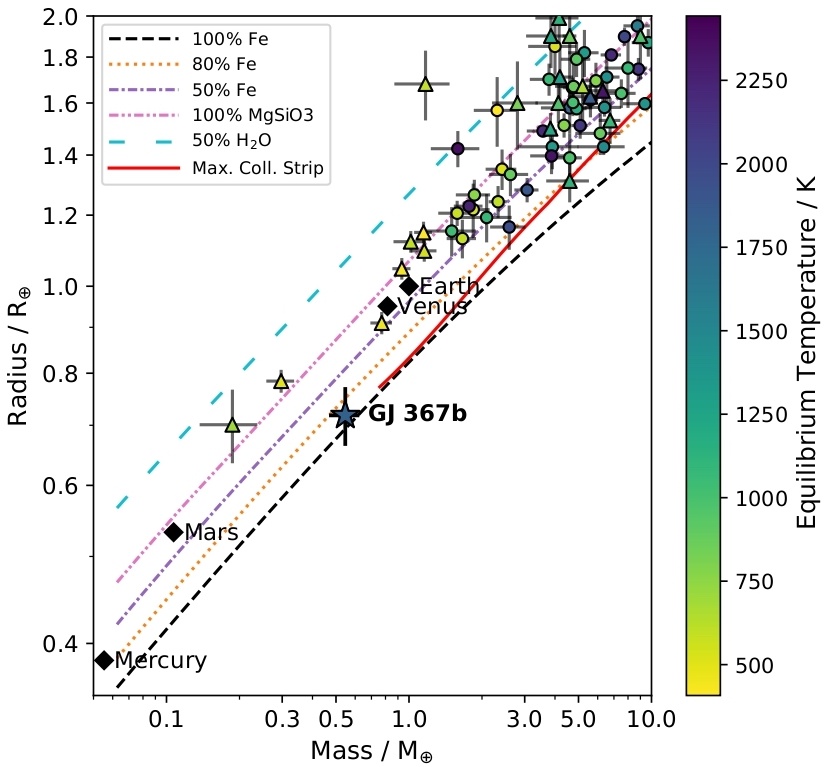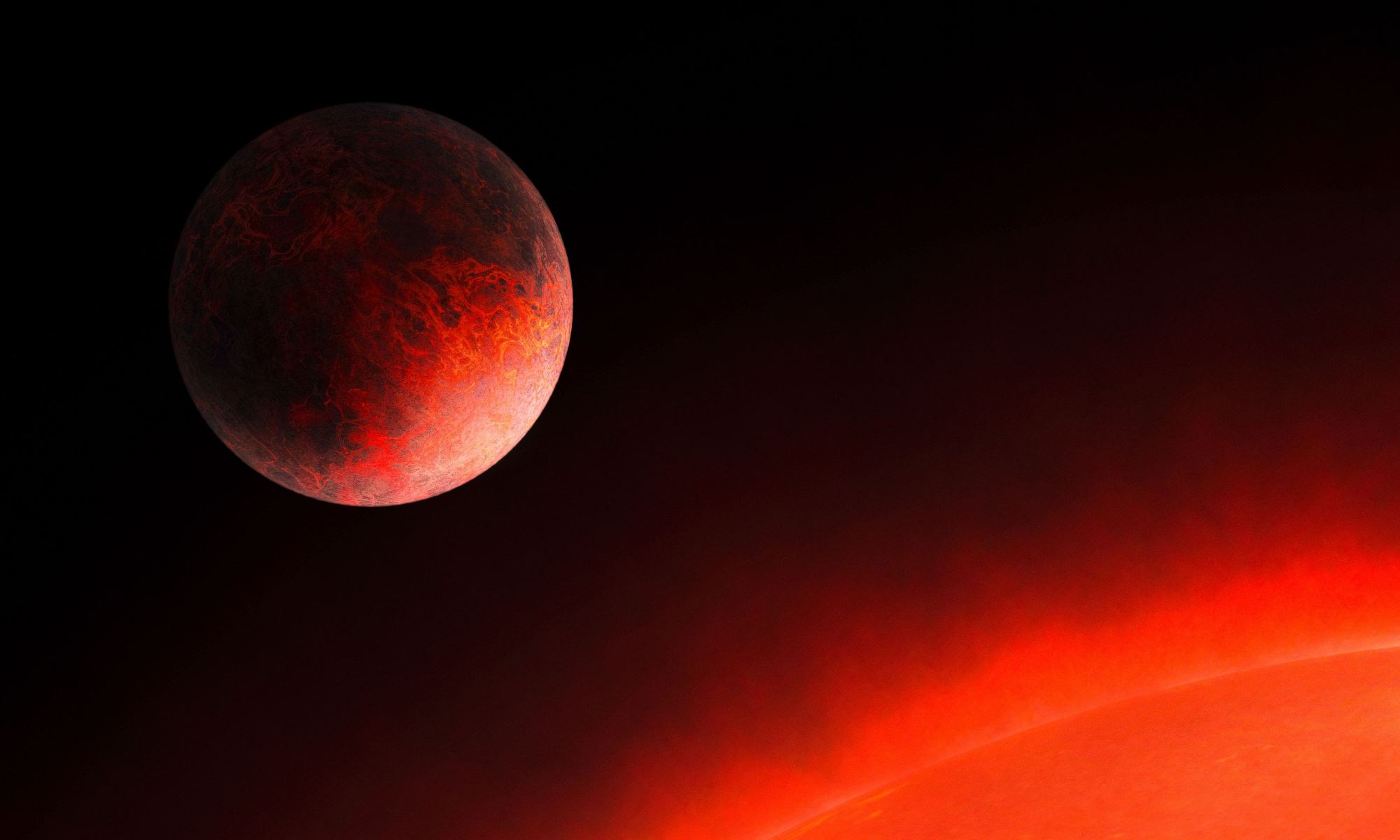Most exoplanets are found using a technique known as the transit method, where the exoplanet passes in front of its star, causing the star to dim slightly. It takes several transits to confirm an exoplanet, so it’s not surprising that most known exoplanets have a fairly short orbital period. Months or days rather than years. There’s also an observational bias in that most known stars are red dwarfs, so it’s usually not surprising that we’ve found yet another exoplanet closely orbiting a red dwarf star. But sometimes what we find is so extreme, it really is surprising.
Recently astronomers discovered a planet orbiting a red dwarf known as GJ 367. This particular star is about 31 light-years from Earth and isn’t particularly special, but its planet orbits the star at a distance of about one-sixtieth that of the orbital radius of Mercury. The planet is so close to GJ 367 that it makes a complete orbit every 8 hours.
One of the disadvantages of the transit method is that it can only tell you the size of an exoplanet relative to its star. Based on the transit data we have, we know the planet is roughly the size of Mars. But that doesn’t tell us anything about the planet’s composition. To determine that, the team had to look at other data.
Based on the temperature of the star and the planet’s orbital distance, the team estimates that its surface temperature could be about 1,500 degrees Celsius. That’s more than twice as hot as Venus and is hot enough to melt rock and iron, so it could be a boiling lava planet. The planet’s actual temperature depends on its atmospheric composition, assuming it has one. One idea about close-orbiting planets like this is that most of the atmosphere boils away, leaving a rocky iron core.

To test this idea, the team used data from the HARPS instrument on the European Southern Observatory’s 3.6m telescope. HARPS can measure the relative motion of GJ 367. Part of that motion is the wobble caused by the gravitational pull of its planet. The bigger the wobble, the more massive the planet. When the team analyzed the data they found the planet has a mass about 5 times that of Mars.
This is surprisingly massive and means the planet has a density just under that of pure iron. Based on planetary models, the world is likely a thin crust covering a large iron core, which adds weight to the idea that it might have once been a gassy super-Earth that has been stripped of its atmosphere and outer crust.
We should be careful not to infer too much about this world just knowing its size and mass. Astronomers have only found a handful of these ultra-short period planets, so we still have much to learn. But it is clear that the universe is filled with some very strange planets indeed.
Reference: Lam, Kristine WF, et al. “GJ 367b: A dense, ultrashort-period sub-Earth planet transiting a nearby red dwarf star.” Science 374.6572 (2021): 1271-1275.
Reference: Armstrong, David J., et al. “A remnant planetary core in the hot-Neptune desert.” Nature 583.7814 (2020): 39-42.

